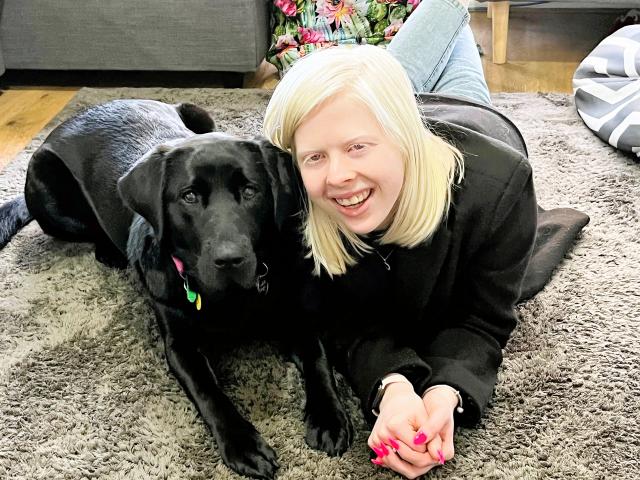Lucy Carpenter is getting much more out of life thanks to her new Guide Dog, Dottie.
The 19-year-old Ocean Grover has low vision and said she feels less isolated, safer leaving home independently and more enthusiastic and energetic about life.
Dottie was assigned to Lucy through the National Disability Insurance Scheme (NDIS) and has helped Lucy feel more comfortable on public transport and more confident attending her university lectures in Melbourne.
Lucy says Dottie has also broken-down social barriers. When she is out in public with her canine companion by her side, she is now enjoying greater inclusion.
“Prior to Dottie, I found it hard to meet new people, especially at university,” she says.
“I would walk up with my cane, and we would head into class, but everyone would see my cane, know what it was for and never bring it up. Conversation-wise it made it awkward.
“But now I have Dottie, she’s an easy conversation starter. People engage with me way more and I feel that awkwardness has gone.
“When Dottie is with me, I haven’t had a single day where someone hasn’t spoken to me.
“They ask her name, they comment on how beautiful she is and what great work Guide Dogs do, then we get into a conversation. It’s been really nice.”
While Dottie has been life-changing for Lucy, not everyone is considered suitable to work with a Guide Dog.
The main criteria is good cane skills.
“People don’t realise how much goes into getting a Guide Dog,” Lucy says.
“I was on Guide Dog Victoria’s (GDV) waiting list for a while, then I had to do two extensive assessments to see if I was suitable to work with a dog or not, all before I was matched with Dottie.
“At my first assessment, a Guide Dog Mobility Instructor (GDMI) watched me walk around familiar and unfamiliar areas using my cane to evaluate my skills. Then in my second assessment the GDMI held a Guide Dog harness handle next to me and I had to walk alongside him holding it so he could assess if I could follow a Guide Dog or not.
“The GDMI also assessed my walking speed and how much tension I liked on the handle to see if I was comfortable with a dog who pulled me or if I didn’t like that feeling. There were also a lot of discussions about my needs and to match me with the right dog.”
Finally, Lucy did get the all-important call of a possible match – Dottie.
“I was so excited,” she says.
“They brought her down to me to see if we matched, and I felt the connection straight away.
“When we took our first walk, Dottie did everything right and it made me feel really good.”
Confident in their match, the GDMI sent the pair off to Melbourne with three other people and their newly matched Guide Dogs.
“We did 14 days of intensive training around the city with the GDMI, navigating the streets and hopping on and off public transport to see how our dogs performed with us,” Lucy says.
“Then when we arrived home, we had one-on-one training with the GDMI, then once we got the tick of approval, we were off on our own.
“We still have a few little creases to iron out, but Dottie has made me feel more energetic and enthusiastic about life.
“I’m more confident, less isolated and I feel much safer when I travel alone.
“Dottie and I are a great team and now I can’t imagine life without her.”
For more information on the NDIS, visit ndis.gov.au.







